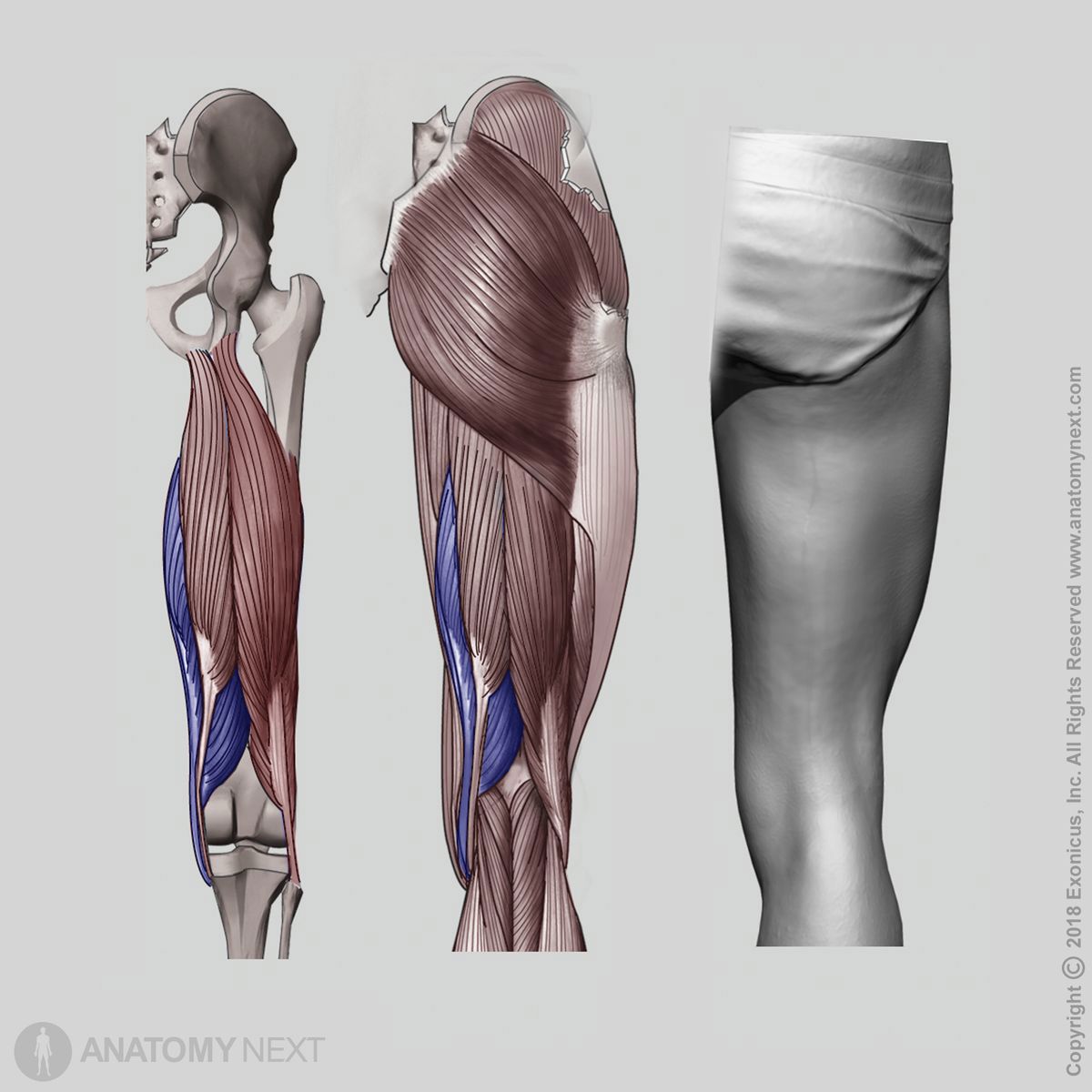- Anatomical terminology
- Skeletal system
- Joints
- Muscles
- Head muscles
- Neck muscles
- Muscles of upper limb
- Thoracic muscles
- Muscles of back
- Muscles of lower limb
- Pelvic muscles
- Muscles of thigh
- Anterior compartment
- Medial compartment
- Posterior compartment
- Muscles of leg
- Muscles of foot
- Heart
- Blood vessels
- Lymphatic system
- Nervous system
- Respiratory system
- Digestive system
- Urinary system
- Female reproductive system
- Male reproductive system
- Endocrine glands
- Eye
- Ear
Semimembranosus
The semimembranosus (Latin: musculus semimembranosus) is a flat and long muscle situated in the posterior compartment of the thigh. It is the most medially located muscle in the posterior compartment, and next to it lies the semitendinosus muscle. The semimembranosus stretches between the hip and knee joints. The semimembranosus, semitendinosus and biceps femoris are all known as hamstring muscles.
| Semimembranosus | |
| Origin | Ischial tuberosity |
| Insertion | Medial condyle of tibia |
| Action | Thigh extension, leg flexion, leg internal rotation |
| Innervation | Tibial branch of sciatic nerve (L5 - S2) |
| Blood supply | Deep femoral, inferior gluteal and popliteal arteries |

Origin
The semimembranosus muscle originates from the ischial tuberosity.

Insertion
The semimembranosus inserts on the medial condyle of the tibia.
Action
The semimembranosus muscle provides the extension of the thigh at the hip joint and flexion and internal rotation of the leg at the knee joint.
Innervation
The semimembranosus is innervated by the tibial nerve - a branch of the sciatic nerve (L5 - S2) that arises from the sacral plexus.
Blood supply
The semimembranosus muscle receives arterial blood supply from the branches of the deep femoral, inferior gluteal and popliteal arteries. The deep femoral artery arises from the femoral artery, the inferior gluteal artery is a branch of the internal iliac artery, and the popliteal artery is a continuation of the femoral artery.